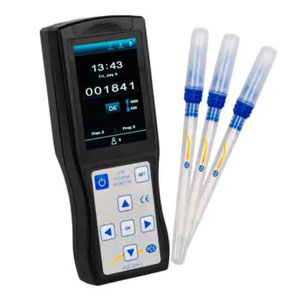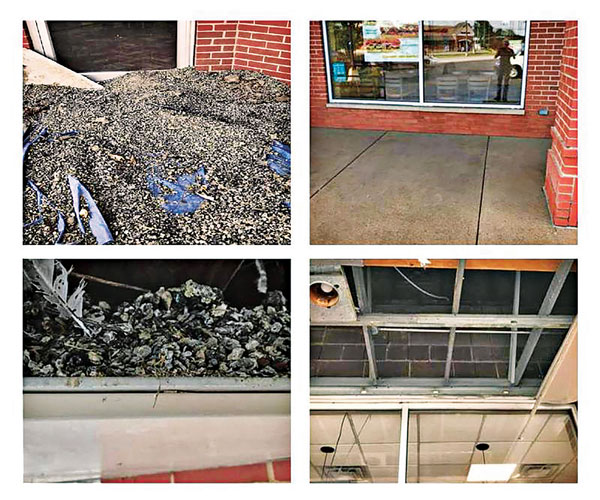
This ATP Surface Tester, manufactured by PCE Instruments, is one of many units that can measure for hygiene on cleaned surfaces.
You may be your customers’ first call for help with their pigeon infestation problems, but do you have the staff, equipment, time or even desire for the waste removal and disinfection side of these projects? In this time of labor upheaval, where it’s hard enough to retain good employees, are you worried about how your technicians will feel about bird cleaning jobs long-term in addition to all their other responsibilities?
One option to sidestep such situations is to outsource the bird waste removal and disinfection services to an outside subcontractor. A professional remediation company should be able to provide pre- and post-testing to verify the areas its team remediated are safe to reoccupy through monitoring surface levels of adenosine triphosphate (ATP).
ATP is the energy molecule that exists in all living cells. Why is ATP testing important in the cleanup and disinfection for services like pigeon and other pest bird species waste? A surface may look clean, but that doesn’t necessarily mean it is clean. Some contamination and debris cannot be seen with the naked eye. This is why quantifying the results after the cleanup and disinfection with an ATP meter is important in most cleanup scenarios, especially in areas where exposure to these microorganisms could cause a potential health concern; the ATP results can report on just how safe the area is.
PPE IS KEY

Kelley Collins
Ensure the subcontractor you choose is fully trained on the use of personal protective equipment (PPE), respirators, proper bird waste cleanup techniques, and electrostatic disinfection. The team should be using a vacuum with a high-efficiency particulate air (HEPA) filter, as well as disinfection equipment like electrostatic sprayers and fogging systems to ensure total and even coverage of the affected area, surfaces, and materials, then quantifying with ATP results.
Of course, pigeons and birds don’t always take up residency in easy-to-reach areas. They sometimes do this in heating, ventilation and air-conditioning (HVAC) rooms, cell towers, or elevator control rooms. These locations usually are only discovered when a maintenance worker is sent to work on them — and then you get the call. Because of the extreme health risk and respiratory dangers found in bird droppings — including histoplasmosis, cryptococcosis, psittacosis, and encephalitis viruses — many maintenance workers will refuse to perform their duties until the machinery is properly cleaned and disinfected. If you don’t want similar conversations with your team, a subcontractor taking on that liability is a viable option.
ESTIMATING THE COSTS
Because commercial and industrial bird control work often is negotiated via a Request for Proposal (RFP), it’s important to decide early on whether you want to use a subcontractor for the cleanup. In accounts where maintenance has been neglected for long periods, and thus a large buildup of droppings is involved, you may find it easier just to contract with a company that specializes in the remediation, so your team can have a “clean slate” (well, at least cleaner) with which to deploy your bird remediation strategies. Consider the following seven factors to help determine
the scope and cost breakdown of your RFP:
- What is the size of the area in need of cleanup?
- What are the access limitations to the area in need of cleanup, if any? Examples include sensitive computerized equipment, other damage to the area such as weakened roof tiling, outdoor weather concerns during the timeframe in which work is to be completed, etc.
- What is the severity of the soiling? Remediation subcontractors likely have “seen it all,” but it’s important to distinguish a one-visit account from a multiple-visit account, for example — and how soon it is safe for your team to come in and start excluding future bird populations from roosting.
- How complex will the strategy need to be regarding the structure, or structure and contents? For example, are the droppings primarily on the floor, or on and in equipment?
- How many technicians, including subcontracted cleaning technicians, will it take to perform the job?
- How long will it take your team, including your subcontracted cleaning team members, to perform the job to completion?
- What will be the disposal costs of biohazardous waste? The subcontractor should be able to provide this information based on your local market, if you are unfamiliar yourself.
Keep in mind, these third-party contractors also often offer additional services like bat guano, animal waste, or rodent dropping cleanouts; hoarder home cleanouts; odor removal and more. Consider them a non-competitive resource to perform the tasks you don’t want to do, so you have more time to focus on your pest control and prevention efforts.
Case in point
These photos show the amount of pigeon waste a team from national contractor Steri-Clean removed from an area above the front entrance of a restaurant. An electrical problem, most likely caused by the pigeons, led to the discovery of the giant nest. Crews worked for two nights, accessing the problem area and remediating the account so an electrician could return and repair the electrical problem safely.

Top left: The droppings above the roof entrance, seen here after the roof ceiling was taken down, were estimated to have built up over a period of about two years, with an estimated flock of 25 to 50 pigeons at any given time. Top right: The same area, after the Steri-Clean team disposed of the droppings and debris. The team uses specialized equipment to ensure there is no bird disease health risk left at the scene, visible or otherwise. Bottom left: A “before” shot of what the team saw after opening a ceiling panel in the roof entrance overhang. Bottom right: Starting with a clean, debris-free slate like this makes it possible for bird management technicians to conduct a proper inspection and determine exclusion strategies. PHOTOS: STERI-CLEAN
Leave A Comment